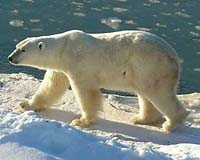| . |  |
. |
Belgium (SPX) Dec 22, 2010 Maritime transport causes about 4% of global man-made CO2 emissions which makes its carbon footprint approximately as high as Germany's. There is no regulation of international maritime transport emissions yet, but this is currently under discussion in the International Maritime Organization (IMO) and at the United Nations Framework Convention on Climate Change (UNFCCC). In respect of greenhouse gas (GHG) emissions, shipping is the most environmentally-friendly mode of transport. However, if no action is taken, it is estimated that emissions from ships will increase by 150-200% by 2050. At present, around 50,000 merchant ships transport 90% of global goods and make maritime transport indispensable for the world economy. A report published by the European Commission's Joint Research Centre (JRC), provides the first comprehensive overview of methodologies for estimating air emissions from shipping, describes technological solutions and analyses policy options for reducing carbon emissions and air pollution in this sector. Research, Innovation and Science Commissioner Maire-Geoghegan-Quinn said: "This JRC report underlines why pollution from shipping, like that from many other sources, needs to be reduced both to help tackle climate change and to prevent severe damage to human health. It also discusses options for how a combination of technological innovation and market-based policies could deliver the reductions needed. "This study is also a perfect example of how the scientific work done by the Commission's Joint Research Centre can help drive political progress towards the EU's Innovation Union and Europe 2020 goals." Although maritime transport has the lowest ratio of CO2 emissions per ton-kilometre transported compared to other modes of transport, its greenhouse gas (GHG) emissions are expected to increase from the current level of around 1 giga-tonne per year, by an estimated 150-200% over the next four decades. Moreover, the shipping sector is a source of air pollution. Unless measures are taken, air pollution over the main shipping routes will increase due to an estimated 10-20% rise in sulphur dioxide emissions in the next two years. Marine fuel oil has a very high sulphur content which ranges from a global average of 27,000 ppm (parts per million) to 10,000 ppm in Sulphur Emission Control Areas (SECAs). However, with the new agreement in IMO ships in the Baltic and North Sea SECAS will have to use fuel with only 0.1% of Sulphur content by 2015, as is already the case in the EU ports due to EU legislation. There is significant potential for abating emissions from the shipping sector. Technical solutions to reduce fuel consumption, air pollutants and greenhouse gases are readily available and range from better ship design, propulsion and machinery to optimised operation. This new JRC Reference Report contributes to raising awareness of the environmental impacts, including on health, of world-wide shipping. It analyses the methodological issues raised within the scientific community about assessing the impacts of the maritime sector on the environment, and identifies shortcomings in reliable and comprehensive sources of information. A detailed assessment of the cost efficiency and abatement potential of each technological option described in the report is also provided. However, to achieve significant improvements in the reduction of carbon emissions and air pollution, technological (fuel- and engine-related) solutions should be supplemented with other measures. Market-based options addressing both regional and global measures must also be investigated. The report analyses how the introduction of market-based policies, such as a GHG Emission Trading Scheme (ETS) for the shipping sector at international level, could be used. In summary, this JRC Reference Report provides the first comprehensive framework in which to define a strategy to abate air emissions from ships, and provides the analytical tools to assist in paving the way towards effective policies.
Share This Article With Planet Earth
Related Links Download the JRC Reference Report "Regulating air emissions from ships: the state of the art on methodologies, technologies and policy options" EU maritime transport policy Climate Science News - Modeling, Mitigation Adaptation
 Polar Bears Still on Thin Ice
Polar Bears Still on Thin IceSeattle WA (SPX) Dec 21, 2010 Polar bears were added to the threatened species list nearly three years ago as their icy habitat showed steady, precipitous decline because of a warming climate. But it appears the Arctic icons aren't necessarily doomed after all. Scientists from several institutions, including the U.S. Geological Survey and the University of Washington, have found that if humans reduce greenhouse gas emi ... read more |
|
| The content herein, unless otherwise known to be public domain, are Copyright 1995-2010 - SpaceDaily. AFP and UPI Wire Stories are copyright Agence France-Presse and United Press International. ESA Portal Reports are copyright European Space Agency. All NASA sourced material is public domain. Additional copyrights may apply in whole or part to other bona fide parties. Advertising does not imply endorsement,agreement or approval of any opinions, statements or information provided by SpaceDaily on any Web page published or hosted by SpaceDaily. Privacy Statement |